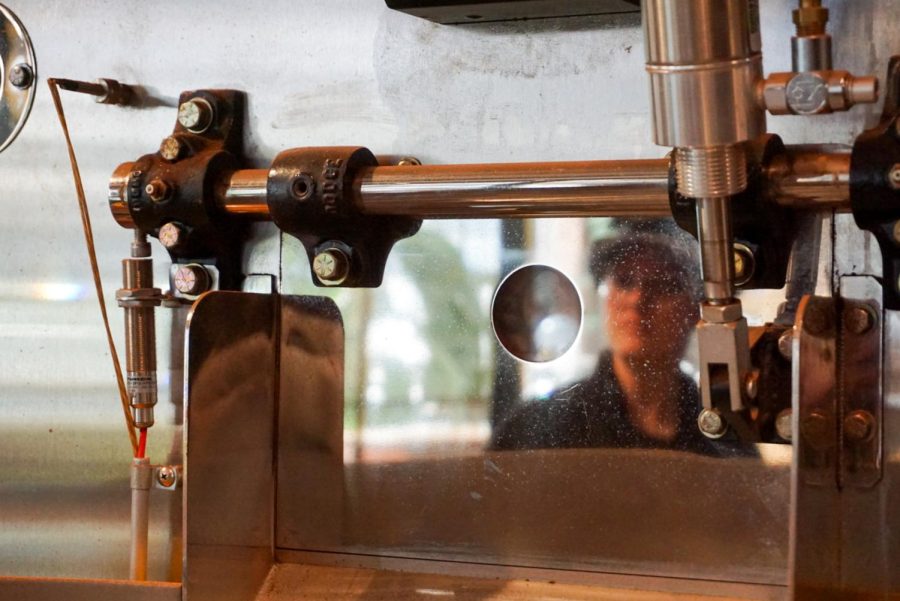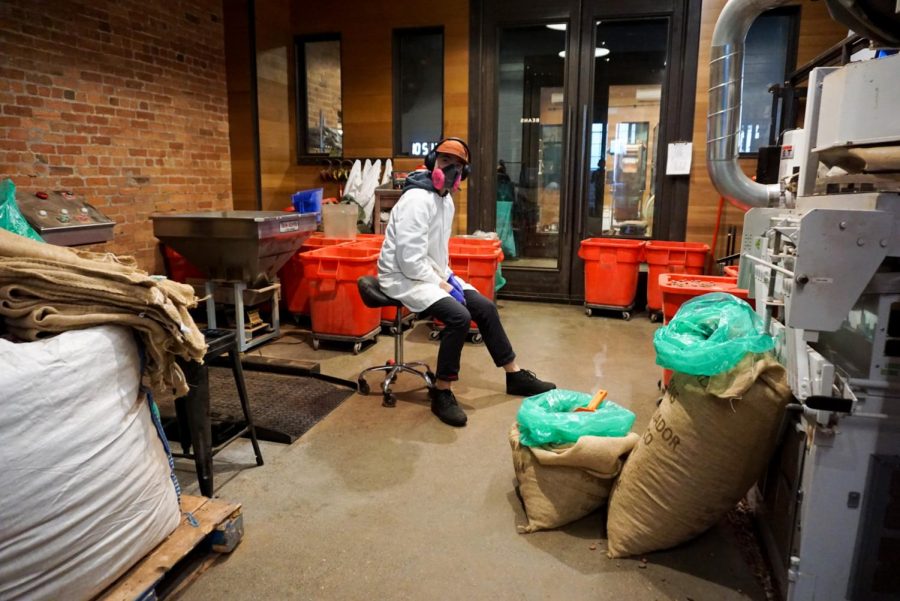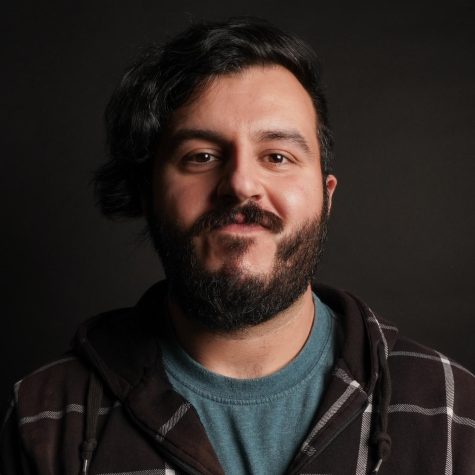For the Love of Chocolate
For most people, the good feeling obtained by chocolate lasts about as long as it’s in your mouth. For San Francisco Chocolatiers, it’s much more; it’s about how it makes others feel and the joy they get from the process.
A chocolate operator oversees the roasting of the cacao beans at a low temperature for long periods of time at Dandelion Chocolate on 16th St. in San Francisco, Calif., on Feb. 17, 2023. The roasting time and temperature affect the outcome of the flavor of the chocolate, like anything in cooking, and is a trial and error process for making chocolate when new beans come into the factory. (Tatyana Ekmekjian/Xpress Magazine)
In the wake of the holidays, students and staff alike shake off their confectionery hangovers. Belts are retightened, diet promises are renewed and vows are made to hold off on the sweets altogether – until the next candy-filled holiday, of course. Special occasions and chocolate have been almost synonymous for centuries.
It started in 1861 when the sale of chocolate on Valentine’s Day became a tradition. A man named Richard Cadbury (whose last name might sound familiar) thought to package the bite-sized treats in heart-shaped boxes, and from there, chocolate’s place in the holiday was solidified, and Cadbury became one of the very first chocolatiers. While a profession based on sweets might seem silly, the San Francisco chocolate-making community disagrees. Have the cacao professionals in our city proven that candy is as much a culinary art as any other food? Does chocolate have an effect on us that goes deeper than growing our love handles?
Mindy Fong, a chocolatier at Jade Chocolates in Chinatown, wasn’t initially into chocolate. “I just chose it because I wanted a hobby and because I wanted something that goes across all cultures,” Fong said.
Fong had a daughter and knew she wanted to be a stay-at-home mom but have a hobby at the same time. Her plans changed when chocolate turned out to be a full-time business.
A self-taught chocolatier, Fong has been in business since 2008. Although she doesn’t consider herself a “super fan of chocolate,” she does consider herself more of an artist than a chocolatier. Originally into architecture, Fong feels that she translated one art form into another. That being said, she doesn’t just make chocolates, she “promotes and retains culture through chocolate.”
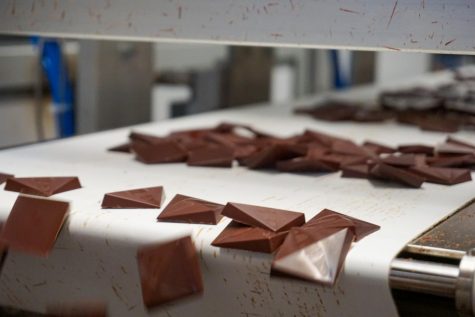
Chocolate can mean much more than just a sweet treat that’s gone after it’s on its way to your stomach.
“I use chocolate as a way for people to understand Asian and Pacific Island culture,” Fong said. As a fifth-generation Chinese American, Fong enjoys combining historical elements with chocolate. “It’s a way to keep the business interesting but mainly to tell stories through chocolate.”
Chocolate has been around for centuries. In fact, chocolate can be traced back to Mesoamerica nearly 3,000 years ago. Cocoa was used by the Olmec, one of the earliest civilizations in Latin America. They drank a chocolate drink that was used during ceremonies and other religious practices. However, the beverage would have had a bitter taste rather than the sweet, candy-like flavor we’re used to. It’d take several evolutions across several centuries until what’s normally considered chocolate today would be produced.
By the mid-1800s the first chocolatiers started creating bars molded from a paste of sugar, chocolate liquor and cocoa butter. Since then chocolate making has become tradecraft and some chocolatiers have become award-winning chefs that create art with chocolate.
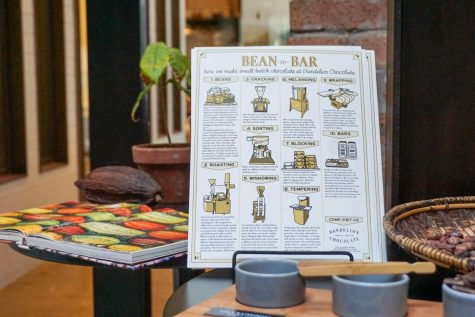
Chocolate made at Jade Chocolates called “Golden Spike,” which has to do with the Transcontinental Railroad, combines Irish and Chinese themes. Irish, representing the workers building from the East, and Chinese, representing those that built from the West, ultimately meeting in Utah.
Fong admits there’s one chocolate she enjoys making for herself the most – Orient Espresso. The chocolate combines cardamom and espresso and pays homage to the Orient Express.
Chef Timothy Shaw is an instructor at SF State and is, in his words, “the designated food guy of the department.” Shaw graduated from Williams College with a degree in Classics and Archaeology and is a great example of the food industry and those that find themselves in it. His focus revolves around food policy and sustainability, but he’s also worked as a private chef for a catering company in New York.
“Studying chocolate is a very specific discipline and one could study only chocolate and make a great career out of being a chocolatier,” Shaw said. “But I’m not an expert.” Shaw finds himself more fascinated by the historical and sustainability aspect of chocolate. For instance, the companies Nestle and Mars both started solely as chocolate makers and “now make everything from pet food to herbal teas and baby formula to pasta,” he added.
Chocolate attracts people from all walks of life, as diverse as a box of milk and dark assortments. Some are captivated by the ingredient itself while others are intrigued by its effect on others and the beauty that can be created from the rich cocoa product.
Eric Chwin of Dandelion Chocolates 16th Street Factory has been a chocolate maker for almost nine years.
“I’m not much of a chocolatier,” Chwin said. He explains the difference between a chocolate maker and a chocolatier. “Chocolate makers make chocolate and chocolatiers make chocolates.”
This may sound obvious and redundant at the same time. However, Chwin elaborates that he makes the chocolate and chocolatiers make things with that chocolate. Chwin graduated from UC Davis with a Food Science degree.
“Food and how it’s made has always been interesting to me,” Chwin said. After he graduated, he applied to a couple of food-related jobs, mostly places where you can eat the finished product. After thinking he bombed his interview with Dandelion he ended up getting hired.
Dandelion is his first job out of college and since working there as long as he has, he’s learned to love the product and the process.
“I don’t think I would have worked here so long if I didn’t love chocolate,” Chwin said. “I like how it tastes and I like how it makes others feel.”
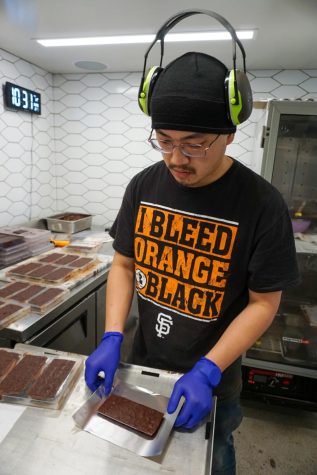
Store-bought chocolate exploded with nearly 58 million pounds of the product being sold on the 14th alone. While the quality of these chocolates may be good enough for the average consumer, for those in the profession, the difference between store-bought and craft chocolate is noticeable.
Chwin admits to being a bit biased, “A lot of store-bought chocolate tastes off to me now… the last non-craft chocolate bar I bought was Tony’s Chocolonely,” he said. What Chwin really loves is the Camino Verde, an Ecuadorian chocolate that they make at Dandelion. The shop has seen an uptick in customers with the recent holiday season and chocolate is still in high demand.
Some may write off such a deep love for chocolate as being nothing more than a hobby, or a way for big-name chocolate to make a quick couple of billion. For many, however, the craft provides a unique medium to deliver important information on history, culture or in some cases, your feelings.
Corporate Chocolate Sales
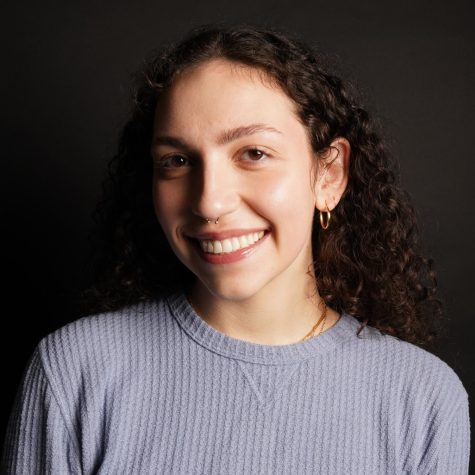
Tatyana Ekmekjian (she/her) is graduating this spring with a major in photojournalism and a minor in hospitality and tourism management at SF State. Tatyana...


